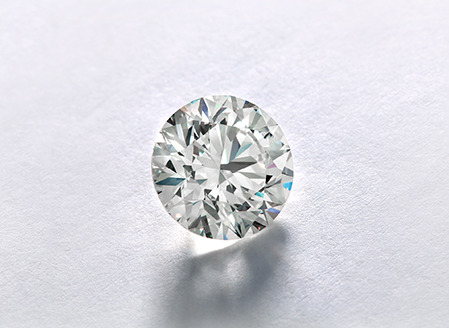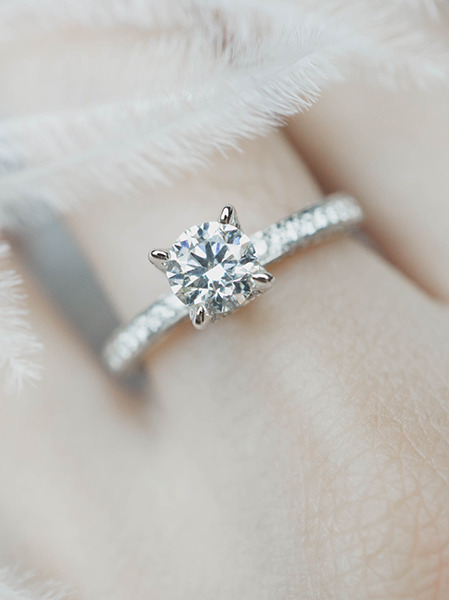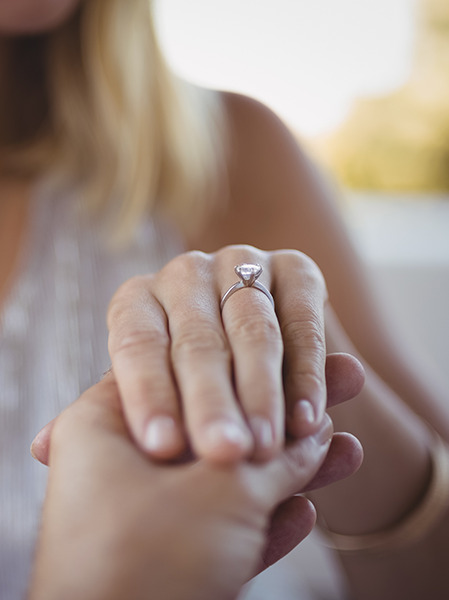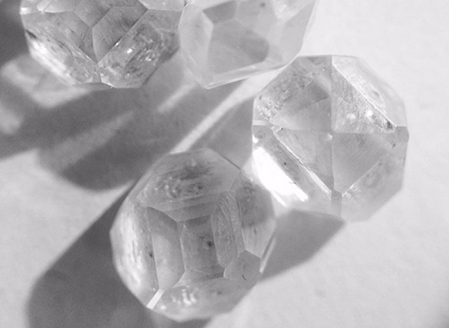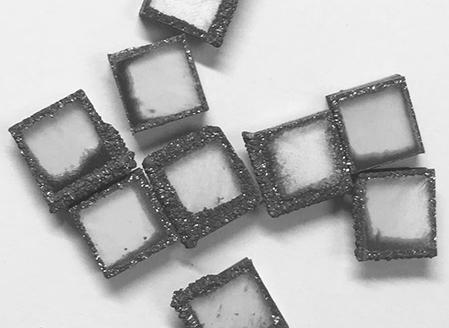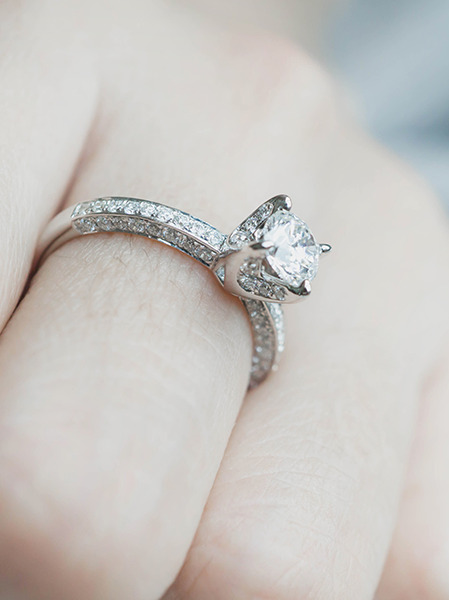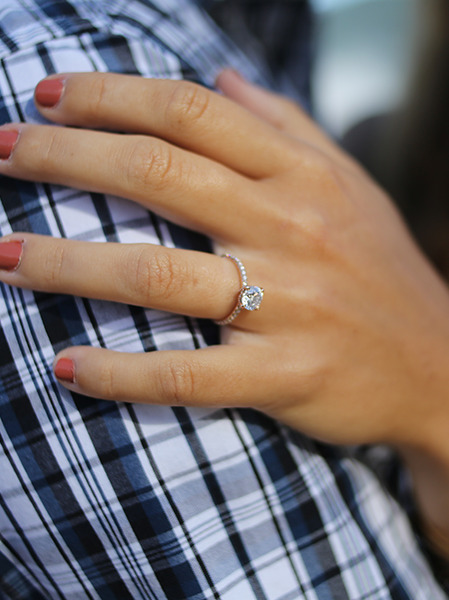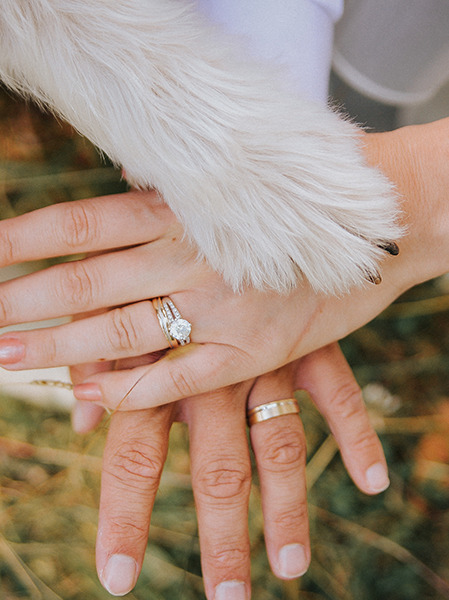Created in a lab with ethical responsibility and low environmental impact.
Lab diamonds are chemically, optically and physically identical to a natural diamonds.
Lab diamonds are about 30-50% less than similar mined natural diamonds.
Shopping for a diamond engagement ring or other type of diamond jewelry? You will discover that there are two types of diamonds on the market. These are natural and lab-grown.
Diamonds can be grown in a lab in a matter of weeks. So, their price tags are often much lower than natural diamonds. This is true even when the overall quality is identical.
But you might wonder whether lab-grown diamonds are a trustworthy investment. Are they real diamonds? What is the difference between a synthetic diamond grown in a lab and a simulant? What are the pros and cons of a lab-grown diamond?
These are all questions which we will answer in our in-depth guide to lab-grown diamonds. That way, you can make an informed decision. Let's get started.
Yes, Lab-Grown Diamonds Are Real Diamonds.
One of the first questions many buyers have about lab-grown diamonds is whether or not they are “real” diamonds.
Are lab-grown diamonds real? Yes! The process by which they are made differs from the natural one, but the result is chemically identical.
Lab-grown diamonds are sometimes called “synthetic” diamonds. But that doesn’t mean they are fake. It just means they are manmade. They can be called “artificial diamonds,” “cultured diamonds,” or “cultivated diamonds.”
They are not the same as “simulated diamonds” (more on that later).
Does the quality of a diamond matter more to you than its origins being natural? Then you will find that a lab-grown stone offers you incredible value at a superior cost.
How do labs create real diamonds without harnessing the powers of geology over millions of years?
Believe it or not, the same conditions which exist within our earth's crust can be replicated in a lab.
It all starts with a diamond seed. Labs subject these carbon seeds to those simulated conditions. Doing so allows them to carry out the same process of diamond formation in a matter of weeks.
You will notice when you are shopping for synthetic diamonds that they may be referred to as HPHT or CVD diamonds.
HPHT stands for “High-Pressure, High-Temperature,” which is one common lab process used to create lab diamonds. CVD stands for “Chemical Vapor Deposition,” which is another popular process used to create lab diamonds.
There are variations on these different types of methods as well. For example, some diamonds are made through low-pressure CVD (LPCVD). Others are made through ultrahigh vacuum CVD (UHVCVD), and so forth.
The majority of the lab grown diamonds that are available for purchase on Sun Diamond are created using the CVD process.
When labs create diamonds using the High-Pressure, High-Temperature (HPHT) method, the seed of a diamond is placed along with carbon in a mechanical press. Under the crush of this high-pressure press and the application of high heat, the carbon mimics the lattice of the diamond seed and rapidly produces a diamond.
Chemical Vapor Deposition (CVD) involves the use of a reactor. The seed for a diamond goes into the reactor. Carbon rich gasses are pumped inside the chamber, mostly methane gas. By zapping those gasses with microwaves, the lab is able to produce plasma. The carbons contained in the gasses are released and adheres to the seeds of the diamonds. Rapid growth results, and soon, what started as a seed becomes a sparkling diamond.
As mentioned before, you should not see a lab-grown diamond referred to as a “simulated” diamond or a “simulant.”
Why not? Because those words refer to something else altogether.
Diamond simulants are not chemically identical to real diamonds. In fact, they are other substances that look similar to diamonds at a glance.
Some diamond simulants are readily identifiable. With a little training, it is easy to spot the difference between a low-quality simulant and a real diamond.
Others are more convincing. They may deceive with ease unless you have the help of professional instrumentation to conduct a close examination.
Examples of diamond simulants (some natural, others lab-created) include moissanite, glass, zircon, and cubic zirconia. Marketed properly, these gems are not “fake.” They simply are not diamonds. They should be sold as “simulated diamonds” or referred to as the substances they are, i.e. “zircon.”
To avoid mistaking a simulated diamond for a real one, always buy from sources you trust. Be sure to request the diamond grading certificate from a reputed gemological lab for the diamond you are interested in purchasing.
Again, it is important to understand that lab-grown diamonds are neither fake nor simulated. They are true diamonds, every bit as much so as those which come from the ground.
With their outstanding low prices, lab-grown diamonds have a lot going for them. So why do people still purchase natural diamonds?
For some, the allure of diamonds rests in the natural process of their ecological formation coupled with their rareness. A lab-grown stone simply does not have that particular appeal.
Others choose natural diamonds for resale reasons. They see a diamond as something to invest in and perhaps pass down to their heirs. One can certainly resell a synthetic diamond. But it will not fetch the same price as a natural stone that is treasured for its rareness and its history.
Ultimately, only you can know whether a lab-grown diamond or a natural one is the right one for you to buy.
If you are looking for a “greener or environmentally friendly” diamond from an ecological standpoint, a lab-grown diamond is it. A lab-grown diamond raises no ethical concerns.
If the price is a concern, You will pay less far for a lab-grown diamond than you would for a natural one.
If the diamond size is a concern, you will be able to purchase a much larger diamond for the same budget as a natural diamond.
It is always a good rule of thumb to consult with your partner if you are shopping for a diamond for someone other than yourself.
If your recipient does not have a preference, ask yourself what is important to you in a diamond?
If what you value most is rarity and resell opportunities, a natural diamond may be worth the higher price tag.
But if what matters to you most is environmentally friendly, size and appearance, and price value, a lab-grown diamond might be a preferred choice.
Purchasing a diamond is no easy task. Introduction of lab grown diamonds has added to the confusion on what to buy? Natural Diamond or Lab Grown Diamond?
Which is why at Sun Diamond, we have created a unique shopping experience to help you choose your perfect diamond for that special someone. Only at Sun Diamond you are able to compare the price and availability of lab grown vs. natural diamonds in realtime. Furthermore, you can search and compare diamonds using the 4C's (cut, color, clarity, and carat) of diamond grading to narrow down and choose between a natural mined diamond or a lab grown diamond.
You are even able to choose the quality and type of accent diamonds for your ring. Giving you the flexibility to choose your preferred accent stone type and fully customize your engagement ring. Most of our rings are available with lab grown diamond accents to match your center stone. Apart from rings, we also let you build earrings, pendants, and other jewelry with Lab Grown Diamonds.
The simplest and best approach is to ask for the gemological certificate before you commit to a purchase. Preferably from a reputable gemological lab such as GIA (Gemological Institute of America), AGS (American Gem Society), IGI (International Gemological Institute) or GCAL(Gem Certification and Assurance Lab)
What about inspecting the diamond yourself by eye or with equipment to look for telltale signs?
Manmade diamonds and natural diamonds are chemically identical. Thus, telling the two apart reliably can be extremely challenging. A lack of inclusions might be a sign that a diamond is artificial. But some natural diamonds are remarkably flawless.
Gemological labs use specialized gem-testing equipment to grade diamond quality and determine the origin of man made vs. natural. So, it is best simply to request the certificate. So, it is best to request the certificate.
Another way to tell is to inspect the diamond girdle using a 10x diamond loop. Most genuine diamond manufacturers will laser inscribe the diamond girdle with the terms as "Lab Grown" or "LG" to indicate diamond is a lab grown diamond.
If you decide to resell a synthetic diamond, you may be able to do so at under the wholesale price. Not all buyers are in the market for synthetic diamonds, but some may prefer them for the same reasons that you do.
Some people worry that if they purchase a lab-grown diamond, it will get cloudy years down the road. But this is not a concern. Your lab-grown diamond is as hard as any natural one, and its durability is identical. It is every bit as timeless, and should sparkle in as mesmerizing a way in ten years, a hundred, or a thousand as it does today.
